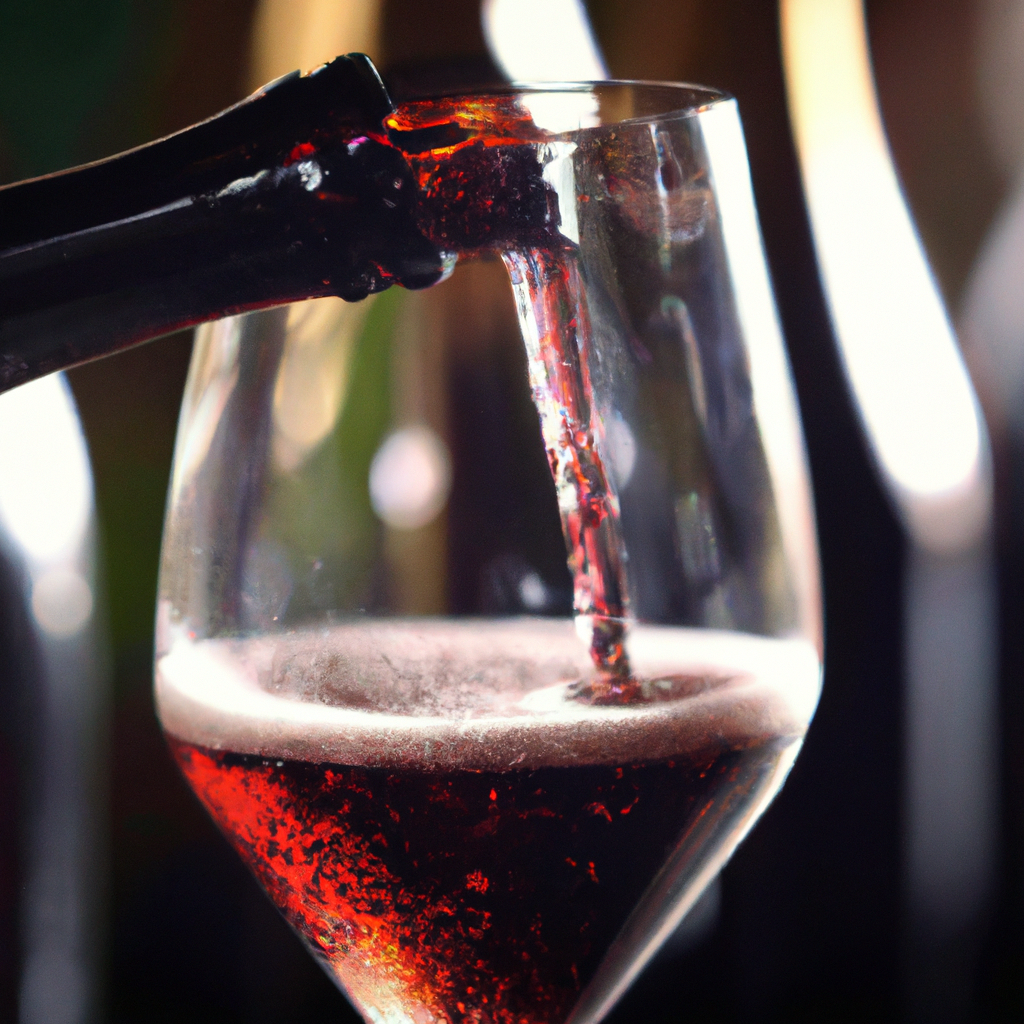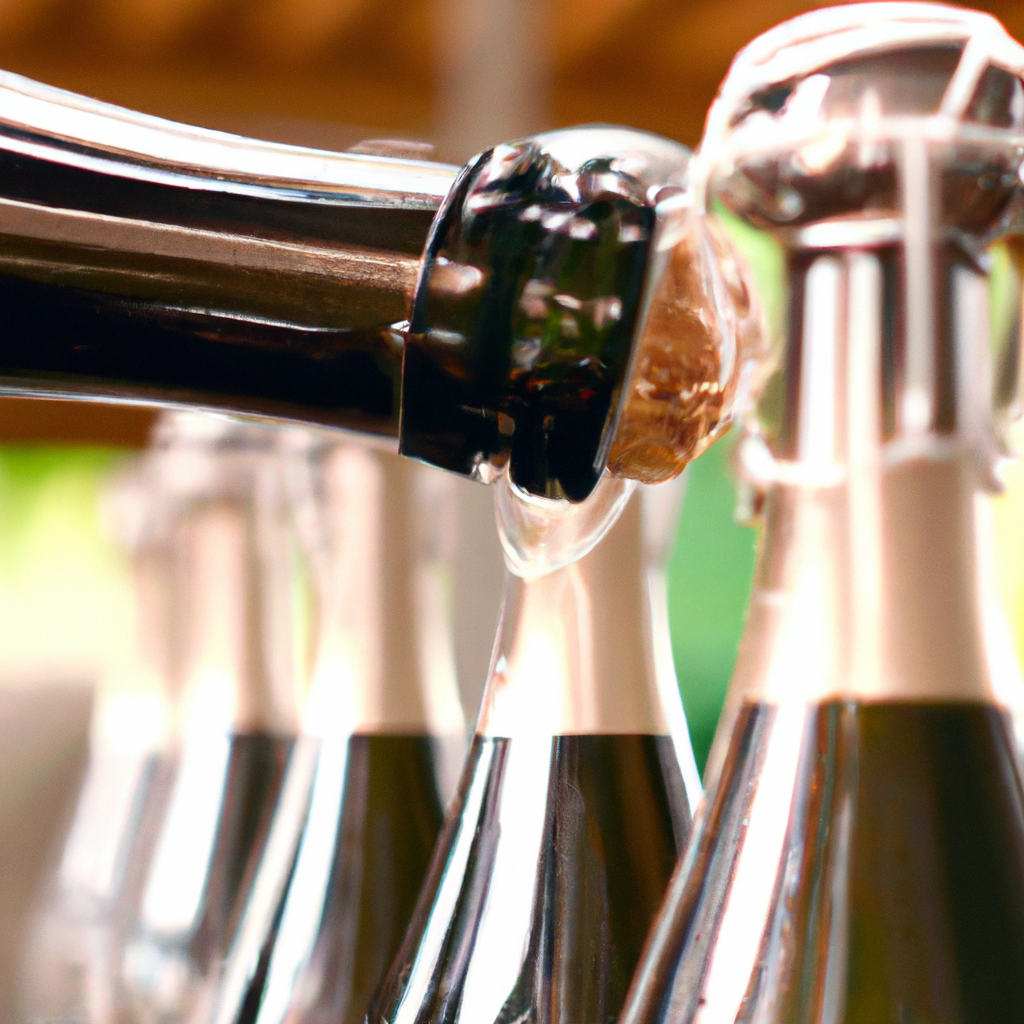
-
Article Summary
- The Ultimate Guide to Sparkling Wine Production: Your Go-To Resource
- Key Takeaways
- Introduction: The Effervescence of Excellence
- The Process of Sparkling Wine Production
- The Traditional Method: Méthode Champenoise
- Other Methods of Production
- Sparkling Wine Regions Around the World
- FAQ Section
- What is the difference between Champagne and other sparkling wines?
- What are the main grape varieties used in sparkling wine production?
- How long does sparkling wine last after opening?
- What is the best temperature to serve sparkling wine?
- What food pairs well with sparkling wine?
- Conclusion: The Art and Science of Sparkling Wine Production
- Key Takeaways Revisited
The Ultimate Guide to Sparkling Wine Production: Your Go-To Resource

[youtubomatic_search]
Key Takeaways
- Sparkling wine production involves a complex process that includes two fermentation stages.
- The traditional method, also known as Méthode Champenoise, is the most prestigious and labor-intensive method of sparkling wine production.
- Other methods of production include the Charmat method, Transfer method, and Ancestral method.
- Sparkling wine regions around the world, including Champagne, Prosecco, and Cava, each have unique production methods and grape varieties.
- Understanding the production process can enhance the appreciation of sparkling wine.
Introduction: The Effervescence of Excellence
Sparkling wine, with its effervescent bubbles and distinctive taste, is a symbol of celebration and luxury. But behind every bottle of sparkling wine lies a complex and meticulous production process. This article delves into the intricate world of sparkling wine production, exploring the various methods, the key wine regions, and the unique characteristics that define this beloved beverage.
The Process of Sparkling Wine Production
The production of sparkling wine involves a two-stage fermentation process. The first stage, known as primary fermentation, is similar to that of still wine and results in a base wine. The second stage, secondary fermentation, is where the magic happens. This is when the base wine is sealed in a bottle with a mixture of yeast and sugar, triggering a second fermentation that produces the carbon dioxide responsible for the wine’s signature bubbles.
The Traditional Method: Méthode Champenoise
The traditional method, also known as Méthode Champenoise, is the most prestigious and labor-intensive method of sparkling wine production. Originating in the Champagne region of France, this method involves aging the wine on its lees (dead yeast cells) for a minimum of 15 months for non-vintage Champagne and three years for vintage Champagne. This extended aging process contributes to the wine’s complexity and depth of flavor.
Other Methods of Production
While the traditional method is highly revered, other methods of sparkling wine production also exist. The Charmat method, used primarily in Italy for Prosecco, involves conducting the second fermentation in large steel tanks rather than individual bottles. This results in a wine with lighter, fruitier flavors. The Transfer method, used in Australia and the United States, is a hybrid of the traditional and Charmat methods. The Ancestral method, the oldest method of sparkling wine production, involves bottling the wine before the primary fermentation is complete, resulting in a naturally sweet and lightly sparkling wine.
Sparkling Wine Regions Around the World
While Champagne is the most famous sparkling wine region, other regions around the world also produce exceptional sparkling wines. Prosecco, from the Veneto region of Italy, is known for its light, fruity flavors and affordable price point. Cava, from Spain, is made using the traditional method and offers great value for money. Other notable sparkling wine regions include California, South Africa, and Australia.
FAQ Section
What is the difference between Champagne and other sparkling wines?
Champagne is a type of sparkling wine that comes from the Champagne region of France. It is made using the traditional method and must adhere to strict regulations regarding grape varieties, vineyard practices, and aging times. Other sparkling wines can be made using different methods and grape varieties, and come from various regions around the world.
What are the main grape varieties used in sparkling wine production?
The main grape varieties used in Champagne production are Chardonnay, Pinot Noir, and Pinot Meunier. Prosecco is made from the Glera grape, while Cava is made from a blend of Spanish grape varieties including Macabeo, Parellada, and Xarel-lo.
How long does sparkling wine last after opening?
Once opened, a bottle of sparkling wine will start to lose its fizz. It’s best to consume it within 1-3 days, and always remember to reseal it with a sparkling wine stopper and refrigerate it to preserve the bubbles.
What is the best temperature to serve sparkling wine?
Sparkling wine is best served chilled, at a temperature of around 6-10°C (43-50°F). This helps to maintain the bubbles and enhance the wine’s flavors.
What food pairs well with sparkling wine?
Sparkling wine is incredibly versatile when it comes to food pairing. It goes well with a variety of foods, from seafood and poultry to cheese and desserts. The key is to match the weight and flavors of the wine with the food.
Conclusion: The Art and Science of Sparkling Wine Production
Sparkling wine production is a fascinating blend of art and science, tradition and innovation. From the meticulous methods of production to the diverse regions and grape varieties, there is much to appreciate in every bottle of sparkling wine. Whether you’re a casual drinker or a serious wine enthusiast, understanding the production process can enhance your appreciation of this effervescent beverage.
Key Takeaways Revisited
- Sparkling wine production is a complex process involving two fermentation stages.
- The traditional method, or Méthode Champenoise, is the most prestigious method of production.
- Other methods include the Charmat method, Transfer method, and Ancestral method.
- Sparkling wine regions around the world each have unique production methods and grape varieties.
- Understanding the production process can enhance your appreciation of sparkling wine.
[youtubomatic_search]






